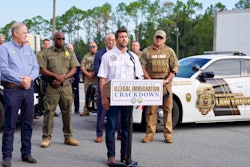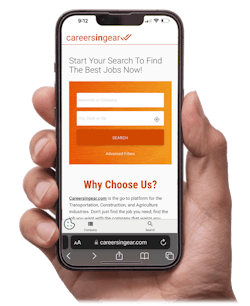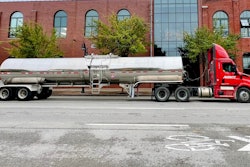Will the regulatory roulette wheel ever stop? Or will it just keep spinning while the trucking industry continues to have to place bets on the future? It’s truly great that regulators can instantaneously change the rules, completely ignoring the concepts of technology development lead times, laboratory and field testing, developing training procedures, and more. Making changes in the automotive world is really just so easy — just snap your fingers and make it so.
Supply chains are just as easy to transform. Instantaneously switching sources, switching product chemistries, switching delivery modes. Long-term contracts can just be ignored. Inventories in warehouses are irrelevant. Things in the shipping pipeline can be tossed overboard if they are no longer needed.
And all these changes come at no cost. They are free. Really.
I used to argue frequently with the purchasing department head at a truck manufacturer I worked for about following the rules on everything. I had a habit of finding entirely new uncharted procurement waters, which required creating new rules. Purchasing systems designed to enable manufacturing production-level vehicles at volume bring with them a lot of requirements. I was often buying for one-off prototype development, often trying out new vendors. The purchasing people feared that whatever I was doing in the prototype world might someday migrate into their rigid production world, hence the need to apply the production methodology to purchasing anything.
Those rules often required going through approved sources using suppliers that had been vetted by purchasing people to ensure they were financially stable enough to support years of production, that they were sourcing suitable materials from suitable sources, that their pricing was in line with expectations, that they didn’t have legal issues, that they had a history of paying bills on time, that they had proper accounting systems, that their billing systems were compatible with yours, that their lead times were realistic, etc.
Getting on an approved supplier list is critical for companies wanting to secure future business. Staying there also requires ongoing maintenance and being subjected to independent auditing.
Start-ups have significant challenges becoming approved suppliers. They often have a nebulous funding history made up mostly of promises and dreams, they have little or no existing sales history, and they tend to be asset-light. Often, they have a track record of over-promising and under-delivering.
Getting one of these fledgling companies approved as a supplier could take months of effort. Keeping them in good standing might take years.
Those well-established suppliers — the ones on the approved list — did not have a free ride with purchasing. It turns out there were expectations tied to being an approved supplier. Challenging things like having annual cost reduction goals, or required investment to get new business — often referred to as having skin in the game. Their product deliveries also were subject to inspection and, to adapt a well-used term, failure was an option with significant ramifications.
Changes in purchasing can be glacially slow for many products. Sometimes, higher corporate powers can intercede and things happen rapidly. When the boss wants something done, magically the red tape parts. But those are the exceptions.
Purchasers at aerospace and defense contractors have even more requirements, more rules to follow to ensure quality, performance, traceability, origin, etc. Aerospace parts often have to have records from origin to final disposal on which specific parts made by which supplier went on which specific aircraft. That lifetime accountability is largely to ensure safety and, occasionally, for understanding the cause of accidents.
Truck makers and their suppliers also often provide spare parts for the life of their products. The service needs of vehicles in the field can stretch over decades. “You need a factory-approved part for your 1995 truck, sure, I’ll order it from our warehouse, it’ll be here tomorrow.”
Changes in designs become extra space requirements in warehouses. Those spare parts that go out of production need a significant amount of shelf space. Often, stock is purchased prior to the end of production and stored awaiting a future service request. Suppliers have to keep track of all those old parts.
Parts are not just physical items. Often, it is a software variation, some of which only work on specific vintages of computer hardware.
Then there are technicians. It turns out the diagnostic programs and equipment they use have just as much complexity as the vehicles themselves. Getting tools updated to diagnose and repair changes to vehicles can take months. Plus, significant changes often require retraining and recertifying the technicians.
Change also brings the risk of unintended consequences. Complex systems like vehicles and their support systems take years to evolve with significant feedback from users in the field. A myriad of changes occur to refine and improve these products as complete systems. Often a late change to a design may be implemented and it may cause many previously unseen and unexpected issues.
Engineers are rarely omniscient. A change in a coating or a source for a raw material may lead to discovering a brand new issue elsewhere in the vehicle. NACFE’s executive director, Mike Roeth, often quotes Donald Rumsfeld on this. “There are known knowns, things we know that we know; and there are known unknowns, things that we know we don't know. But there are also unknown unknowns, things we do not know we don't know.”
Changing regulations may appear to be quick and cost-effective to the casual observer, but changes are like icebergs; what you see is only a small part of the challenge. Every vehicle change has ramifications for all the infrastructure that procures, makes, stores, certifies, and installs the equipment.
Regulatory changes are not free, rarely instantaneous, and often have unintended consequences.
Playing regulation roulette is gambling. The constant in gambling is that the house usually wins in the long run. Are you feeling lucky? Place your bets.











